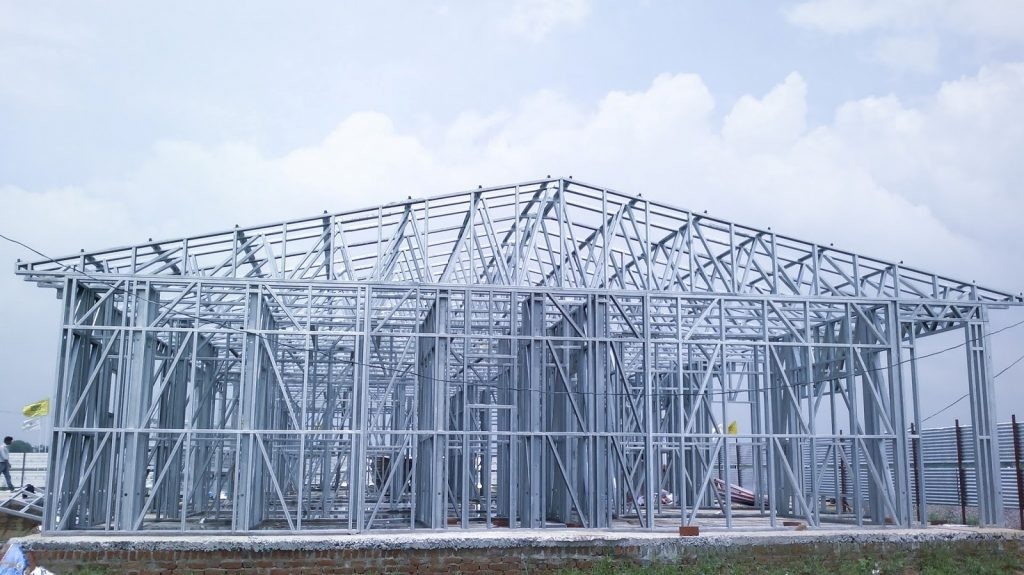The Advantages of Light Gauge Steel Frames: A Comprehensive Guide

The Evolution and Advantages of Light Gauge Steel Frames in Modern Construction
In the ever-evolving landscape of construction, the utilization of light gauge steel frames has emerged as a transformative force, revolutionizing the way buildings are designed and constructed. This comprehensive exploration delves into the evolution, structural integrity, design considerations, environmental sustainability, and practical applications of light gauge steel frames, shedding light on their myriad advantages in modern construction projects.
Evolution of Light Gauge Steel Frames:
Light gauge steel frames have a rich history dating back to the late 19th century when steel began to be utilized in construction due to its strength and durability. However, it was not until the mid-20th century that advancements in manufacturing techniques and engineering principles led to the widespread adoption of light gauge steel frames in construction. The development of computer-aided design (CAD) software further facilitated the precise design and fabrication of light gauge steel components, opening doors to innovative construction methods.
Structural Integrity of Light Gauge Steel Frames:
One of the primary advantages of light gauge steel frames lies in their exceptional structural integrity. Unlike traditional building materials such as wood or concrete, steel boasts high strength-to-weight ratio, providing superior load-bearing capacity and resistance to environmental factors such as fire, moisture, and pests. Moreover, the inherent properties of steel ensure minimal dimensional changes over time, guaranteeing long-term stability and durability of light gauge steel frame structures.
Design Considerations for Light Gauge Steel Frame Construction:
Designing with light gauge steel frames offers unparalleled flexibility and versatility to architects and engineers. The lightweight nature of steel allows for efficient transportation and handling on-site, reducing construction time and labor costs. Additionally, the modular nature of light gauge steel components enables precise customization and prefabrication, ensuring seamless integration with architectural designs while minimizing material waste. Advanced CAD software facilitates accurate modeling and structural analysis, enabling architects to optimize designs for maximum efficiency and performance.
Environmental Sustainability of Light Gauge Steel Frames:
In an era marked by growing concerns over environmental sustainability, light gauge steel frames offer a compelling solution for eco-conscious construction practices. Steel is inherently recyclable, with a significant portion of steel used in construction being sourced from recycled materials. Furthermore, the durability and longevity of light gauge steel frame structures reduce the need for frequent maintenance and repairs, minimizing the environmental impact associated with building lifecycle. Additionally, the lightweight nature of steel frames translates to reduced transportation emissions during construction, further contributing to environmental conservation efforts.
Practical Applications of Light Gauge Steel Frame Construction:
The versatility and adaptability of light gauge steel frames make them ideal for a wide range of construction applications. From residential homes and commercial buildings to industrial facilities and institutional structures, light gauge steel frames have been successfully employed in diverse projects worldwide. Case studies showcasing the innovative use of light gauge steel frames in real-world construction projects demonstrate their effectiveness in delivering cost-efficient, sustainable, and aesthetically pleasing buildings.
Challenges and Innovations in Light Gauge Steel Frame Construction:
While light gauge steel frames offer numerous advantages, they are not without challenges. Issues such as thermal bridging, acoustic performance, and corrosion resistance require careful consideration during the design and construction phases. However, ongoing research and technological advancements have led to innovative solutions to address these challenges. Strategies such as incorporating thermal breaks, utilizing advanced insulation materials, and implementing corrosion-resistant coatings have enhanced the performance and longevity of light gauge steel frame structures.
Future Trends in Light Gauge Steel Frame Design and Technology:
Looking ahead, the future of light gauge steel frame construction is characterized by continued innovation and technological advancements. Emerging trends such as the integration of Building Information Modeling (BIM) software, the development of high-performance steel alloys, and the adoption of sustainable construction practices are poised to further elevate the capabilities and sustainability of light gauge steel frames. Additionally, the growing emphasis on off-site construction methods and modular construction techniques is expected to drive the widespread adoption of light gauge steel frames in future construction projects.
Conclusion:
In conclusion, the evolution and advantages of light gauge steel frames in modern construction underscore their transformative impact on the built environment. From their exceptional structural integrity and design flexibility to their environmental sustainability and practical applications, light gauge steel frames have redefined the possibilities of construction. As the construction industry continues to evolve, light gauge steel frames are poised to play a central role in shaping the future of sustainable, efficient, and resilient buildings.

